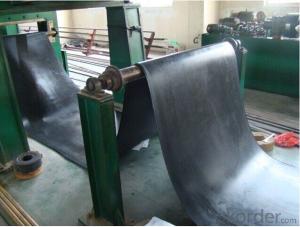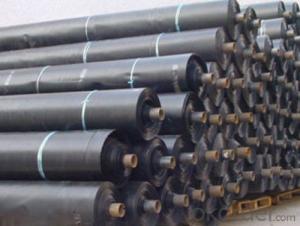Stainless Steel Island Top
Stainless Steel Island Top Related Searches
Best Paint For Stainless Steel Blanket Insulation For Steel Buildings Primer For Galvanized Steel Foam Filter For Stainless Steel H S Code For Stainless Steel Surface Grinding Wheels For Stainless Steel Surface Grinding Wheels For Hardened Steel Hole Saw For Stainless Steel Paint For Stainless Steel Stainless Steel For BbqHot Searches
Steel Mesh Panels For Sale Price For Stainless Steel Scrap Scrap Price For Stainless Steel Price For Stainless Steel Stainless Steel Tank For Sale Stainless Steel Sheets For Sale Cheap High Tea Sets For Sale Stainless Steel Tanks For Sale Stainless Steel For Sale High Density Fiberboard For Sale Solar Hot Water Collectors For Sale Scaffolding For Sale In Uae Scaffolding For Sale In Ireland Scaffolding For Sale In Houston Type Of Inverter For Solar Price Of Shipping Containers For Sale Types Of Inverter For Solar Stock Price For Aluminum Used Solar Inverter For Sale Steel Mesh Panels For SaleStainless Steel Island Top Supplier & Manufacturer from China
Okorder.com is a professional Stainless Steel Island Top supplier & manufacturer, offers integrated one-stop services including real-time quoting and online cargo tracking. We are funded by CNBM Group, a Fortune 500 enterprise and the largest Stainless Steel Island Top firm in China.Hot Products
FAQ
- There are several measures that can be taken to avoid scratches or dents on stainless steel sheets: 1. Exercise caution when handling: Take care not to drop or drag stainless steel sheets against rough surfaces. It is advisable to wear gloves or protective gear to minimize the risk of scratches caused by sharp objects or tools. 2. Opt for gentle cleaning materials: To prevent scratches when cleaning, use soft cloths or non-abrasive sponges. Avoid steel wool or harsh cleaning agents that can harm the surface. Also, make sure to wipe in the direction of the grain to preserve the stainless steel's appearance. 3. Apply protective films or sheets: Adding a protective film or sheet to the stainless steel surface can provide an extra layer of defense against scratches or dents. These films are typically adhesive and can be easily removed once the stainless steel sheets are installed. 4. Store correctly: Store stainless steel sheets in a clean and dry environment to prevent scratches or dents caused by contact with other objects. Avoid stacking sheets directly on top of each other without any protective barrier in between. 5. Invest in edge protectors: Stainless steel sheets are often susceptible to dents or scratches on their edges. Using edge protectors or corner guards can help prevent damage during handling, transportation, or storage. By adhering to these preventive measures, the likelihood of scratches or dents on stainless steel sheets can be significantly reduced. This will ensure their durability and preserve their flawless appearance.
- There is a wide range of surface patterns available for stainless steel sheets, each possessing its own distinct qualities and aesthetic charm. Some of the most frequently encountered patterns are as follows: 1. Brushed: This texture is obtained by gently brushing the stainless steel surface with an abrasive material, resulting in a smooth and uniform appearance. It is commonly employed in scenarios where a sleek and contemporary appearance is desired. 2. Mirror: This pattern entails polishing the stainless steel surface to achieve a highly reflective finish, akin to that of a mirror. It is often utilized in decorative applications where a high degree of shine is sought after. 3. Satin: Also referred to as a brushed or hairline finish, this pattern is achieved by uniformly applying a fine abrasive substance to the stainless steel surface in a linear motion, resulting in a matte effect. It is commonly employed in architectural and kitchen applications. 4. Embossed: This pattern involves imprinting a design or texture onto the stainless steel surface using a patterned roller or press. It can produce a variety of decorative effects, such as raised or recessed patterns, and is frequently utilized in interior design and automotive applications. 5. Perforated: In this pattern, the stainless steel sheet is punctured with a series of small holes arranged in a regular pattern. This allows for improved ventilation and drainage capabilities and is commonly employed in architectural and industrial applications. 6. Etched: This pattern involves chemically treating the stainless steel surface to create a design or pattern. It can be used to produce intricate and detailed designs, making it popular in decorative and artistic applications. These examples merely scratch the surface of the diverse range of surface patterns available for stainless steel sheets. The choice of pattern often depends on the desired application, functionality, and visual appeal.
- Stainless steel sheets prove to be an excellent option for oil and gas equipment due to their exceptional resistance to corrosion. This characteristic makes them highly suitable for the oil and gas industry, where exposure to harsh environments, chemicals, and high temperatures is common. Moreover, stainless steel sheets possess superior strength and durability, allowing them to withstand the demanding conditions found in oil and gas equipment. In addition, their ease of cleaning and maintenance is crucial in industries that uphold strict hygiene standards. Furthermore, their resistance to heat and pressure further enhances their suitability for oil and gas equipment. In conclusion, the use of stainless steel sheets is a reliable and practical choice for constructing oil and gas equipment, guaranteeing long-lasting performance and minimal maintenance requirements.
- Yes, stainless steel sheets are suitable for welding and fabrication. Stainless steel is known for its excellent weldability and can be easily welded using various welding processes such as TIG (Tungsten Inert Gas) or MIG (Metal Inert Gas). It also offers good formability, allowing it to be fabricated into different shapes and structures with relative ease.
- What's the difference between cold rolling and hot rolling of stainless steel plate?
- Cold rolling and hot rolling are different processes, and cold rolling is usually made by longitudinal rolling. Cold rolling process usually includes preparation of raw materials, pickling, rolling, degreasing, annealing (heat treatment), finishing and so on. Cold rolling takes hot rolling product as raw material, and the raw material should be removed before cold rolling so as to ensure the surface cleanness of cold rolling products.
- To avoid galling on stainless steel sheets, there are various actions that can be taken: 1. Use lubrication: Apply a suitable lubricant to the stainless steel sheets, particularly in areas where they come into contact with other surfaces or materials. This will decrease friction and help prevent galling. 2. Avoid similar metals: Galling can occur when stainless steel sheets come into contact with other stainless steel surfaces due to the transfer of metal particles. To prevent this, try using different metals or non-metallic materials that are compatible with stainless steel. 3. Improve surface finish: Ensure that the stainless steel sheets have a smooth surface finish. Rough surfaces can increase friction and the likelihood of galling. Consider utilizing polishing or grinding techniques to achieve a smoother surface. 4. Control contact pressure: Excessive pressure between stainless steel sheets can lead to galling. Minimize contact pressure by adjusting clamping forces or utilizing gaskets, washers, or other materials that distribute the load evenly. 5. Reduce sliding speed: High sliding speeds can contribute to galling. Slow down the movement or apply anti-galling coatings to decrease the risk of galling on stainless steel sheets. 6. Perform regular maintenance: Regularly inspect the stainless steel sheets for signs of wear or damage. Address any issues promptly to prevent further damage that could result in galling. By implementing these preventive measures, the occurrence of galling on stainless steel sheets can be significantly reduced, ensuring their longevity and optimal performance.
- The maximum thickness available for stainless steel sheets can vary depending on the specific grade of stainless steel and the manufacturing capabilities of the supplier. However, in general, stainless steel sheets can be found in thicknesses ranging from 0.5mm to 80mm. It is important to note that thicker sheets are typically used for specialized applications that require increased strength and durability, such as construction projects or heavy machinery. When selecting stainless steel sheets, it is crucial to consider the intended use and consult with a reputable supplier to ensure that the desired thickness is available.
- Yes, stainless steel sheets can be used in construction projects. They are commonly used for various applications in construction due to their durability, corrosion resistance, and aesthetic appeal. Stainless steel sheets are often used for roofing, cladding, structural components, and decorative purposes in buildings and infrastructure projects.















































